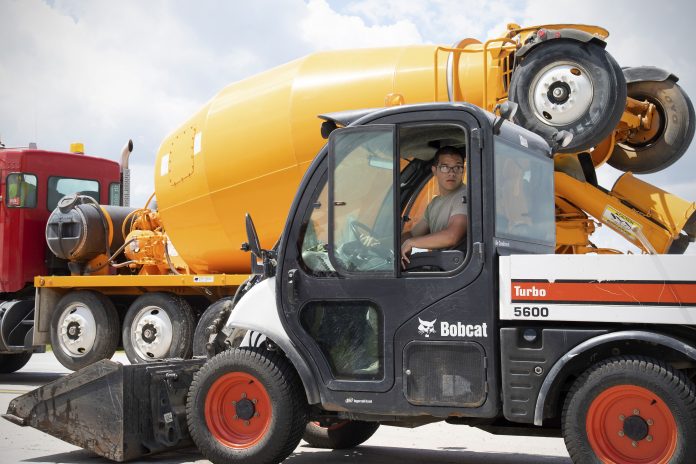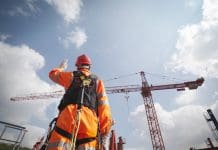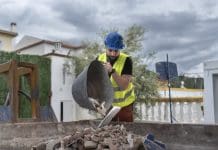Derek Bryan of Verizon Connect on why the Internet of Things could represent the next step forward for construction asset tracking
There is a thin line between asset tracking and the Internet of Things (IoT). From simply keeping track of equipment in a spreadsheet to using RFID or GPS to log equipment usage and location electronically, most construction businesses will typically have some form of asset tracking system already in place.
However, new developments in number-crunching power and advances in all-in-one software platforms are helping construction businesses enhance their asset tracking capabilities by embracing IoT, arguably the next evolutionary step in the development of asset tracking.
IoT makes asset tracking data actionable by adding context. In other words, identifying not just where equipment is being used, but how it is being used and by whom. The industry has evolved to the point where any tool or asset can be inexpensively connected via IoT sensors and data relating to its usage and/or condition can be captured, interpreted and acted upon. With this information in hand, managers can make better-informed decisions regarding whether it’s necessary to rent additional equipment or simply retrieve underutilised, owned equipment from another job site and deploy it elsewhere.
Here we look at some of the ways in which construction managers can get the most value from IoT.
Keep your most important assets healthy with maintenance management
Upgrading your asset tracking to the level of IoT means more than just developing an understanding of where your assets are. Sensors can be used to send status updates on a range of events, including temperature change, excessive vibration or door movement. This helps track mechanical wear and tear, and schedule necessary maintenance (based on usage metrics, such as engine hours) or create alerts for parts when they need replacing.
It’s easy to take your business assets for granted until they go missing or break down. Using a digital solution to track and regulate equipment maintenance can therefore help protect the lifeblood of businesses and prevent costly downtime. For powered equipment that requires preventative maintenance or routine fixes, a consolidated asset tracking solution can provide a holistic view of maintenance alerts, regardless of manufacturer.
Moreover, paperless inspections can help automate the monitoring of equipment condition, which improves on-the-job safety, productivity and overall job efficiency.
Get the most out of your assets with utilisation reports
Are assets giving a good return on investment (ROI) or are they sitting idle most of the day? Asset utilisation reports can help identify equipment with low ROI, providing managers with the numbers they need to identify equipment that can be sold off or repurposed somewhere else in the business, or to review how often and for how long a piece of equipment is used on a particular day or during certain periods of time.
That data can be matched against the progress of work accomplished to identify discrepancies or inefficiencies. Monitoring asset information, such as time of use, idle time, employee usage and maintenance dates, also helps construction firms to reduce or eliminate unnecessary fuel and labour costs that can eat away at profit margins.
Combat the high cost of theft and unauthorised asset use
Given the cost of purchase and the risk of theft, it’s no surprise that a company that leases or owns construction equipment would want to keep a close eye on its assets. With an intelligent asset tracking solution in place, construction firms can receive notifications when a piece of equipment is operated during an unauthorised time period or even if a piece of equipment is being moved out of hours or outside an approved area. This feature is particularly critical for smaller construction firms that may lack extensive job site security resources or security technology.
“Geofences” allow construction managers to easily draw up virtual perimeters around the area in which equipment is authorised to be used. If assets leave that perimeter, they can be instantly notified either via SMS alerts or via their asset tracking software platform’s mobile application. These instant alerts allow managers or their security teams to notify law enforcement immediately, if required, potentially reducing damage and accelerating recovery.
Consolidate all your construction equipment data in one place
Construction companies own and operate thousands of powered and non-powered assets of various makes, models and manufacturers. These various systems are independent, meaning construction site or equipment managers must access several different sources to pull the asset data they need. Any investment in IoT, therefore, must be matched with investment in a single, complete asset-tracking software system. In so doing, construction firms can make sure all the data from their powered and non-powered assets is consolidated and centralised, regardless of make, model or manufacturer.
With this holistic approach in mind, companies can gain an enhanced level of visibility of assets and deliver positive returns on their investment in IoT.
VP EMEA
Verizon Connect
Tel: +44 (0)800 975 4566















